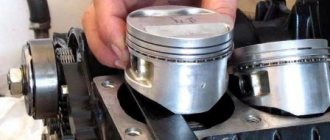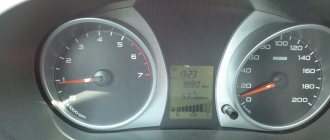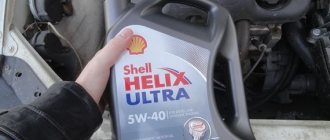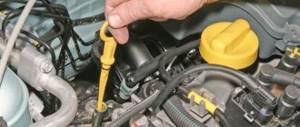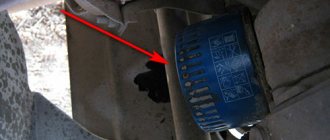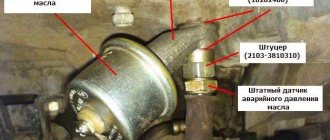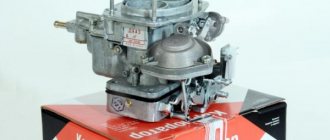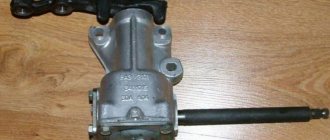All cars have one very useful device under their hood - an oil dipstick. An oil gauge is needed to check the oil level. Without lubricant, the engine will not last long, which is why it is so important to know what is considered normal oil consumption. Often the car begins to consume oil in almost canisters. This may indicate that a major overhaul of our four-wheeled friend is coming.
Normal oil consumption and excess oil consumption
In new cars, oil consumption is considered normal if it does not exceed 0.3 percent of the consumed fuel. For large diesel-powered machines, the lubricant consumption rate is considered to be from 1 to 3 percent. Usually all this is indicated in the engine datasheet. Such indicators can last for some time, and then oil consumption in the engine begins to increase, and this serves as the first alarm bell that the engine needs repair.
Some car enthusiasts consider it normal if the oil is not topped up from change to change. This means that if the product is replaced every 10 thousand kilometers, then the car will consume no more than 100 grams of oil per thousand kilometers. But before you find out the permissible oil consumption, you need to find out what reasons may affect its increase. Such factors include the following.
- Burning oil on cylinder surfaces and this is the main reason.
- Engine wear in motor vehicles. Such a motor requires a large amount of lubricant.
- A turbocharged engine has high oil consumption rates; it is used to lubricate the turbocharger.
- Failure in the sealing elements also leads to high oil consumption in the engine.
Yes, most often excess consumption of lubricants occurs due to leakage. The reason can be found by taking the car to a service station. They will also replace worn parts, such as oil seals and gaskets, which are responsible for sealing. Often the leak occurs in the valve cover or cylinder head. This type of leak is easy to detect and fix.
There is another problem area - the oil seals, which are located in the camshaft and crankshaft. Such a leak is insidious and can only be noticed with the help of tools. An oily spot on the crankcase wall should serve as a warning signal. The situation that has arisen does not bode well, so everything needs to be corrected as quickly as possible.
Finding out the reasons for excessive oil consumption
An oil leak in the oil pan is very serious. It can only be detected with the protection removed; the machine must be on a special lift. The condition of the oil pan must be checked each time lubricant is added. A faulty rear crankshaft oil seal can lead to oil leakage. Its location is in front of the gearbox.
Topping up is not the same as replacing
With low consumption, even exceeding existing standards, motorists continue to use their vehicles, and this often allows them to easily reach the required capital or average repairs. But there are drivers who, faced with the constant need to refuel the engine with oil, believe that with a large amount of renewed lubricant, the need to replace it is lost. Actually this is not true !
When oil is constantly added, sediment forms in the crankcase, and the newly filled liquid is constantly saturated with this sediment. In addition, a dirty filter loses its properties. Therefore, when adding any amount of lubricant, routine oil and filter changes cannot be neglected. It is necessary to carry out such work after completing the mileage determined by the characteristics and properties of the lubricant used.
Secondary reasons for increased oil consumption
Other reasons also need to be considered. As mentioned above, burning oil also contributes to excessive oil consumption. In order to find such a malfunction, you need to take a closer look at the smoke from the exhaust pipe. If it changes color to blue-gray, then abnormal oil burning occurs; if it changes color to black, then there is a malfunction in the injection system.
But the combustion of a product for lubricating parts is not a cause, but only a consequence, and the cause must be found. This will require a complete disassembly of the engine, but this should only be done by a professional. Excessive combustion of a motor lubricant may indicate that the oil is not suitable for your car (oil brand), or the oil seals need to be replaced, or the oil scraper rings are worn out, or perhaps engine parts.
This often happens due to heavy dust contamination of the engine or high crankcase gas pressure. Damage to the seals is already a concern for the mechanic, and everything else is circumstances that cannot be corrected, but you need to try to find out what oil consumption may be normal for your car.
How to determine normal oil consumption and what does it depend on? There are answers to such questions, but they are different. It all depends on the car and engine brand. If for a small car, engine oil consumption of 1 liter per thousand-kilometer road is very high, then exactly the same consumption for V8 and V6 class engines is absolutely normal. Before you find out what the oil consumption rate is in your car, you need to consider why the engine needs oil.
Oil is an important component for the normal operation of a car; it covers all working components and parts with a film. Oily lubrication will help avoid friction of parts, and, accordingly, prolong engine operation. Engine oil consumption directly depends on how much lubricant material burns out.
Excessive oil consumption may indicate engine wear, and drivers decide to take a risky step. It is better to add as much lubricant as a particular machine requires than to carry out expensive engine repairs. But by consulting with car repair specialists, you can learn a lot of interesting things about the oil consumption rate in a certain type of engine, and why these standards are increasing.
How to determine engine oil consumption, reasons for excess consumption
Any vehicle has a very useful mechanism called an oil meter. The dipstick is necessary to check the oil level. Any engine needs lubricant. In the opposite situation, the motor will not work for long. Thanks to the oil meter, you can easily find out the answer to a common question: what is the acceptable amount of oil product consumption? Quite often, a car begins to consume an excessive amount of oil, and this, in turn, may imply a quick overhaul.
Motor oil - consumption rates
When operating properly, engines consume about 0.2 liters of lubricant per 1000 km. ways. However, several factors may influence the amount of oil used:
- Increased oil level in the system. This indicator leads to increased costs of the oil component, due to the exclusion of excess through the crankcase ventilation system.
- Engine oil viscosity. The liquid phase of the lubricant burns faster than the thick phase. For example, the seasonal type of oil becomes liquid very quickly when heated, and, therefore, it is consumed faster. As for all-season motor oil, it is thick and has noticeably lower consumption during operation. This is especially noticeable on long trips.
- Driver's driving style. With increased loads during engine operation, oil consumption increases, including during engine break-in.
- System leakage.
- Engine defect, including factory defect.
All-season oil that remains in the engine for a long time loses viscosity over time. It needs constant topping up.
Aspects of acceptable and excessive oil consumption
The normal consumption of the oil component of a newly purchased car is considered to be 0.1-0.3 percent of the fuel consumption. For large cars, the rate of “eating” is at the level of 2-3 percent. As a rule, this information is contained in the transport passport. But constant monitoring of the amount of oil consumption is required.
We recommend: Design and principle of operation of automatic transmission solenoids
There is an opinion among car owners that oil should not be topped up between changes. This means that it will change every 10 thousand km. A little mathematical calculations, and it turns out that for 1 thousand km. along the way, vehicles will need approximately one hundred grams of oil. Let's consider the main factors for increased consumption of oil products:
- Burnout of motor oil on cylindrical planes.
- Wear of parts of the machine's power unit. In this condition, the engine requires a significant amount of engine oil.
- An internal combustion engine with a turbine has increased consumption rates, since an additional amount of the component is spent on the turbocharger, or more precisely, on its lubrication.
- Violation of the working condition of the seals.
The most common case of excessive car oil consumption is a leak. There are many reasons for leaks; to find out the true cause, it is enough to take the car for inspection to a service station. There they will carry out work on the tightness of worn-out mechanisms in the system.
A very common leak point is the camshaft and crankshaft seals. It is worth remembering that this type of leak is very insidious, since the problem can only be corrected with the help of a special tool. The problem is easy to detect - the appearance of an oil stain on the surface of the crankcase walls. It should be corrected as quickly as possible, since this situation does not bode well for a good outcome.
But the most serious problem is considered to be an engine oil leak in the oil pan. To detect this defect, the protection should be removed, but the car must be on a special lift. Every time you fill up the oil, you need to check the condition of the pan. The most common variation of a leak is considered to be a non-working condition of the crankshaft seal.
Additional reasons for excess oil consumption
An indicator of increased oil consumption can be smoke from the exhaust pipe. If the exhaust is visually gray-blue, then the car burns oil excessively during operation. But if black smoke is visible to the naked eye, this may indicate a malfunction of the injection system.
However, burnout of the lubricant is a secondary consequence, and the main reason lies elsewhere. To understand this issue, you should completely disassemble the motor. Upon examination, a professional can identify the initial cause of increased oil combustion - the need to replace oil seals, wear of rings or mechanism parts, or product mismatch for the machine model.
There are quite frequent cases when excess oil consumption occurs due to significant engine contamination or increased pressure of gaseous substances. Normal oil consumption depends on the vehicle and the type of engine. For example, a small car consumes a liter of lubricant per 1 thousand kilometers. This figure is very high for this class of car, but for V-shaped engines the consumption is considered optimal.
More on the topic: Gear oils
The best option for choosing oil for a car
Having decided on the timing of replacement and lubrication of system parts, the next question arises - what kind of oil to fill in? To solve this problem, you must carefully study the technical service book of the vehicle or the operating manual. The certificates provide a detailed list of oils, thanks to which the engine can become long-lived - documentation of this type contains permissible values for use.
It is worth noting the fact that manufacturers will offer certain brands of motor oil because it is of commercial interest to them. The best option when choosing engine oil is to take into account the parameters and physical data of the car: production date, power and volume of the internal combustion engine.
The next parameter of acceptable values is viscosity, which, as a rule, is indicated on the labeling of any package of oil for automobile engines. In practice, the symbol for this indicator is 10W50 or 0W20. The first number indicates the viscosity of the oil solution when the engine is cold, and the next number, after the letter designation, indicates the performance characteristic, in accordance with the classification of the Society of Automotive Engineers (SAE).
The English letter “W”, when marked twice, denotes all-season oil. But if there is no number after the letter “W”, then this means a winter variety. If the letter designation itself is not there, it’s a summer option.
What determines engine oil consumption?
The consumption rates of motor oil in the engine depend primarily on its quality and viscosity. Viscosity is much easier to deal with. If the oil is very liquid, then a lot of it leaks through the seals. But with quality it’s not so simple. Often the oil is bought cheap, and branded inscriptions, the name of the company - all this is present on the packaging. A cheap product with branded packaging is a real fake.
It should be emphasized that the correct amount of product for lubricating the engine, necessary to maintain the normal functioning of the car, is considered in each specific case to be an exclusively individual indicator (numerical value). Each car owner can completely independently determine this value, based on the knowledge and skills acquired practically.
The main reasons for engine oil consumption
Modern cars with a forced engine require a high-quality and by no means cheap product for lubricating engine components and parts. If this rule is not followed, the lubricant will overheat and split, and soot will appear. A low-quality heating agent settles on the walls, and accordingly, its level in the engine decreases, which has a bad effect on the cooling system, and the engine may overheat.
But that's not all, the car engine begins to become dirty. As a result, the piston rings become coked. You understand that repairs are inevitable. But that's not all. The destruction of the rubber seals will begin. If they overheat, they will begin to resemble plastic and a lubricant leak will occur. All this happens due to the desire to save on a motor lubricant product. Checking the quality of engine oil is not a difficult task.
To do this, you need to remove the valve cover. If you see fuel oil deposits on parts, then high oil consumption is associated with its burnout. Pour in a new product and check after a week. If it turned black again, there could be two reasons. Either the engine of the car is very dirty and the oil has dissolved this dirt in itself, or the replacement agent for lubricating devices and parts is severely damaged and therefore decreases. Such reasons can lead to car engine failure.
Allowing himself to save on motor oil, even if imported, the owner of a souped-up engine cannot understand why the same product works great for his neighbor on the brainchild of the domestic automobile industry. The answer is simple - yes, because that engine never heated up more than 90 degrees, while the forced one has a temperature of 110 degrees. This leads to the destruction of the “branded” product. The oil is simply not suitable for your foreign car.
Oil consumption for diesel engine waste: calculation
Diesel engines, unlike gasoline engines, have been more voracious in terms of oil consumption throughout all periods of the automotive industry. The point is in the specifics of the work: the compression ratio and, in general, the voltage on the crankshaft parts of diesel engines is higher.
Often motorists do not know how to independently calculate the oil consumption of the engine due to waste. To date, several methods are known.
The first and simplest is the topping method. Initially, during the next maintenance, you need to fill the oil strictly according to the upper mark on the dipstick. After 1000 km, gradually add oil from a liter container until the same level is reached. Based on the residue in the canister, you can understand how much oil the car consumed due to waste. Control measurements should be made under the same conditions as at the time of maintenance. For example, if the oil level was checked on a hot engine, then after topping up this should be done under the same conditions. Otherwise, the result obtained may differ significantly from the actual oil consumption of the engine.
The second method will give a more accurate result. Completely drain the oil from the crankcase during maintenance. Fill it fresh to the top mark on the dipstick and check how much is left in the canister. For example, we pour the remainder into a measuring container for a more accurate result, but you can also use the measuring scale on the canister as a guide. We subtract the remainder from the nominal volume of the canister - we get the amount of oil poured into the engine. While driving, over 15 thousand km (or other mileage regulated by the car manufacturer), add oil to the mark and count it. It’s most convenient to simply top up with liter jars. Typically the difference between the marks on the dipstick is about a liter. After the next maintenance, drain the oil from the crankcase and measure its quantity. We subtract the amount of drained waste from the initially filled volume of oil. To the resulting value we add the entire volume of lubricant that was filled in over 15 thousand kilometers. We divide the resulting value by 15. This will be the volume of oil that burns out per 1000 km of run in your car. The advantage of this method is a large sample, which eliminates operational errors that are typical for measurements at short mileage.
We recommend: What is the difference between a strut and a shock absorber?
Then we simply compare the obtained value with the passport data. If the waste consumption is within the norm, we drive on and don’t worry. If it exceeds the passport values, it is advisable to carry out diagnostics and find out the reasons for the increased oil consumption.
